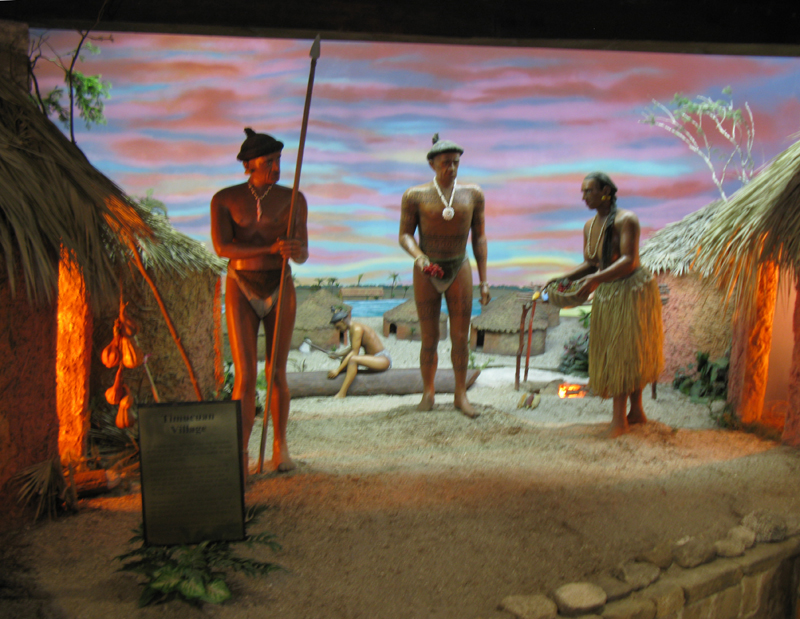
Fountain of Youth (6) |
 |
|---|
Source: WTL© photograph on site at the Fountain of Youth in St. Augustine, Florida. Image and comments: Here is a reconstruction of part of a Timucua village at the archeological park. The indigenous people who lived at this site and throughout what is now northeast Florida and southeast Georgia were the Timucua. They arrived here about 1300 CE after migrating up through the island chains of the Lesser Antilles and the Greater Antilles until they got to the Florida peninsula. When Ponce de León arrived, it has been estimated that there were about 200,000 Timucuans who lived in 35 related chiefdoms; however, they never formed one single political unit, yet they all spoke one of several dialects of the Timucua language. It is not known to what language family Timucuan belongs. The word "Timucua" was first recorded by the French in 1563 as Thimogona, which came a word used by the people who lived along what is know the St. Johns River in Jacksonville to refer to another group that lived to the west of them. After 1565, the Spanish used the term to refer to all the people who spoke any dialect of the Timucuan language. Fr. Francisco Pareja, a well-known Franciscan missionary who arrived in St. Augustine in 1595, lived among the Timucua for 31 years, during which experience he devised the writing system for the language. This was the first linguistic work done on an indigenous language in North America. (Spanish missionaries had worked earlier on other indigenous language throughout Mesoamerica and South America.) In addition, Fr. Pareja wrote and published a Timucuan grammar (1612-27) and bilingual Spanish-Timucua catechisms used for communication and conversion. As late as 1688, the Spanish were still working actively with the Timucuans and their language. At the beginning of the British period of control over Florida, as a result of the treaty ending the Seven Years' War, the Spanish colonists and the Timucua peole and speakers moved to a town near Havana, Cuba. Due mostly to death by European infection by European diseases, by 1595 the Timucuan population had dropped from 200,000 to about 50,000, and their chiefdoms had dropped from 35 to 13. By 1700 the population had dropped to about 1,000 in Cuba. By the early 19th century the last native speaker of Timucuan died; the language became extinct along with the people.. Humanities question: (A) Assuming some degree of accuracy in this reconstruction of Timucuan village life, imagine you are Ponce de León and his men arriving here in 1513. What would your reaction be? (B) By contrast, as a 21st century person, what is your reaction to this model? |
|---|
 |